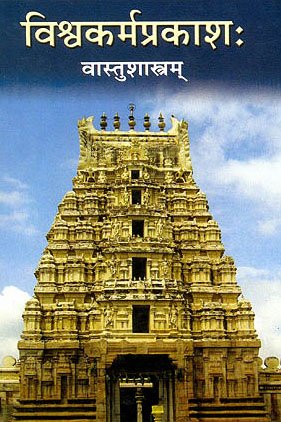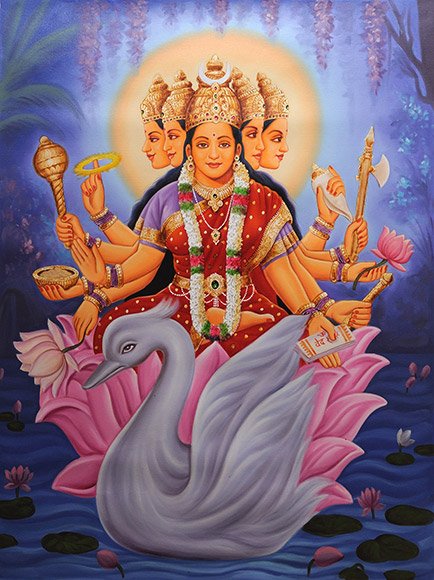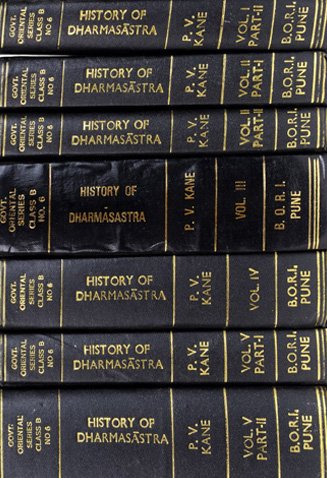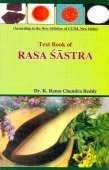Manduka, Maṇḍuka, Maṇḍūka, Māṇḍuka, Māṇḍūka, Mandūka, Mamduka: 28 definitions
Introduction:
Manduka means something in Buddhism, Pali, Hinduism, Sanskrit, Marathi, Jainism, Prakrit, biology. If you want to know the exact meaning, history, etymology or English translation of this term then check out the descriptions on this page. Add your comment or reference to a book if you want to contribute to this summary article.
In Hinduism
Vastushastra (architecture)
Source: Wisdom Library: Vāstu-śāstraMāṇḍuka (माण्डुक) refers to a type of temple (prāsāda) classified under the group named Kailāśa, according to Samarāṅgaṇasūtradhāra chapter 49. The Kailāśa group contains ten out of a sixty-four total prāsādas (temples) classified under five prime vimānas (aerial car/palace), which were created by Brahmā for as many gods (including himself). This group represents temples (e.g. Māṇḍuka) that are to be globular shaped. The prāsādas, or ‘temples’, represent the dwelling place of God and are to be built in towns. The Samarāṅgaṇasūtradhāra is an 11th-century encyclopedia dealing with various topics from the Vāstuśāstra.
Source: Google Books: The Hindu Temple, Volume 1Maṇḍūka (मण्डूक):—The ‘plan’ of 64 squares is called Maṇḍūka or Bhekapada or Ajira, according to the Īśānaśivagurudevapaddhati.

Vastushastra (वास्तुशास्त्र, vāstuśāstra) refers to the ancient Indian science (shastra) of architecture (vastu), dealing with topics such architecture, sculpture, town-building, fort building and various other constructions. Vastu also deals with the philosophy of the architectural relation with the cosmic universe.
Purana and Itihasa (epic history)
Source: archive.org: Puranic Encyclopedia1) Maṇḍūka (मण्डूक).—A class of horse. These highclass horses helped Arjuna in his campaign of victory. (Śloka 6, Chapter 28, Sabhā Parva).
2) Maṇḍūka (मण्डूक).—A tribe. The King of this tribe was Āyus. The daughter of Āyus, Suśobhā was married to Parīkṣit of Ikṣvāku dynasty. They had three sons, Śala, Dala and Bala. (Chapter 190, Vana Parva).
Source: Cologne Digital Sanskrit Dictionaries: The Purana Index1a) Maṇḍūka (मण्डूक).—A Yakṣa; son of Punyajanī and Maṇibhadra.*
- * Brahmāṇḍa-purāṇa III. 7. 123.
1b) Gift of a copper one in ceremonials connected with the digging of tanks.*
- * Matsya-purāṇa 58. 19.
2) Māṇḍuka (माण्डुक).—A pupil of Kṛta.*
- * Brahmāṇḍa-purāṇa II. 35. 51.
3) Māṇḍūka (माण्डूक).—A Bhārgava gotrakāra.*
- * Matsya-purāṇa 195. 21.

The Purana (पुराण, purāṇas) refers to Sanskrit literature preserving ancient India’s vast cultural history, including historical legends, religious ceremonies, various arts and sciences. The eighteen mahapuranas total over 400,000 shlokas (metrical couplets) and date to at least several centuries BCE.
Chandas (prosody, study of Sanskrit metres)
Source: Shodhganga: a concise history of Sanskrit Chanda literatureMaṇḍūka (मण्डूक) refers to one of the 23 types of dohā metres (a part of mātrā type) described in the 1st chapter of the Vṛttamauktika by Candraśekhara (17th century): author of many metrical compositions and the son of Lakṣmīnātha Bhaṭṭa and Lopāmudrā.

Chandas (छन्दस्) refers to Sanskrit prosody and represents one of the six Vedangas (auxiliary disciplines belonging to the study of the Vedas). The science of prosody (chandas-shastra) focusses on the study of the poetic meters such as the commonly known twenty-six metres mentioned by Pingalas.
Dharmashastra (religious law)
Source: Prācyā: Animals and animal products as reflected in Smṛti textsMaṇḍūka (मण्डूक) refers to a “frog”.—The Kāśyapasmṛti [Prāyaścittavarṇanam, I.9] states that if a frog is killed, one must fast for a whole night and then donate a cow. The Manusmṛti [X II.64] states that one who steals linen in reborn as a frog. The Uśānasmṛti states that if on e kills a frog, the offender has to perform ṣoḍhaśākhya-mahāvrata or sustain three nights by consuming milk only [IX.7] or walk a distance of one yojana [IX.8]. The Gautamasmṛti [23.6] states that one who kills a frog (Maṇḍūka) should perform a penance like that of Vaiśyavadha.

Dharmashastra (धर्मशास्त्र, dharmaśāstra) contains the instructions (shastra) regarding religious conduct of livelihood (dharma), ceremonies, jurisprudence (study of law) and more. It is categorized as smriti, an important and authoritative selection of books dealing with the Hindu lifestyle.
Ayurveda (science of life)
Source: gurumukhi.ru: Ayurveda glossary of termsMaṇḍūka (मण्डूक):—Frog.

Āyurveda (आयुर्वेद, ayurveda) is a branch of Indian science dealing with medicine, herbalism, taxology, anatomy, surgery, alchemy and related topics. Traditional practice of Āyurveda in ancient India dates back to at least the first millenium BC. Literature is commonly written in Sanskrit using various poetic metres.
In Buddhism
Theravada (major branch of Buddhism)
Source: Pali Kanon: Pali Proper NamesA deva. In his previous birth he was a frog on the banks of the Gaggara, and, hearing the Buddha preach, was attracted by his voice. A cowherd, who stood leaning on a stick, drove it unwittingly into the frogs head and it died immediately, to be reborn in Tavatimsa in a palace twelve yojanas in extent. Having discovered his previous birth, he appeared before the Buddha, revealed his identity and worshipped him. The Buddha preached to him, and the deva became a sotapanna. Eighty four thousand others realized the Truth. Vv.v.1; VvA.216ff.; Vsm.208f.; Sp.i.121; Mil.350.
Theravāda is a major branch of Buddhism having the the Pali canon (tipitaka) as their canonical literature, which includes the vinaya-pitaka (monastic rules), the sutta-pitaka (Buddhist sermons) and the abhidhamma-pitaka (philosophy and psychology).
Tibetan Buddhism (Vajrayana or tantric Buddhism)
Source: Brill: Śaivism and the Tantric Traditions (tantric Buddhism)Maṇḍūka (मण्डूक) refers to a “frog”, according to the Bhūśalyasūtrapātananimittavidhi section of Jagaddarpaṇa’s Ācāryakriyāsamuccaya, a text within Tantric Buddhism dealing with construction manual for monasteries etc.—Accordingly, “[...] If a frog croaks (maṇḍūka-dhvanin), there is danger of water in the [donor’s?] house. If smoke [is seen], there is distraction of mind. If a person suffering from a disease, a person of a lower [class], a person suffering from leprosy, a deranged person, and a woman are seen, then it causes disease”.

Tibetan Buddhism includes schools such as Nyingma, Kadampa, Kagyu and Gelug. Their primary canon of literature is divided in two broad categories: The Kangyur, which consists of Buddha’s words, and the Tengyur, which includes commentaries from various sources. Esotericism and tantra techniques (vajrayāna) are collected indepently.
Mahayana (major branch of Buddhism)
Source: De Gruyter: A Buddhist Ritual Manual on AgricultureMaṇḍūka (मण्डूक) refers to “frogs” (causing crop destruction), according to the Vajratuṇḍasamayakalparāja, an ancient Buddhist ritual manual on agriculture from the 5th-century (or earlier), containing various instructions for the Sangha to provide agriculture-related services to laypeople including rain-making, weather control and crop protection.—Accordingly, [As the Bhagavān teaches an offering manual]: “[...] All crops, all flowers and fruits will be well protected. [...] All pests will be destroyed. Snakes, mice, mongooses, porcupines, goats, frogs (maṇḍūka), stinging insects, mosquitos, locusts and so on, flocks of birds will perish. All worms will be destroyed. Furthermore, flying insects and so on do not occur. They are never able to destroy. [...]”.

Mahayana (महायान, mahāyāna) is a major branch of Buddhism focusing on the path of a Bodhisattva (spiritual aspirants/ enlightened beings). Extant literature is vast and primarely composed in the Sanskrit language. There are many sūtras of which some of the earliest are the various Prajñāpāramitā sūtras.
Biology (plants and animals)
Source: Google Books: CRC World Dictionary (Regional names)Manduka in India is the name of a plant defined with Centella asiatica in various botanical sources. This page contains potential references in Ayurveda, modern medicine, and other folk traditions or local practices It has the synonym Hydrocotyle pallida var. subintegra (among others).
Example references for further research on medicinal uses or toxicity (see latin names for full list):
· Botanical Bulletin of Academia Sinica (1991)
· Svensk Botanisk Tidskrift (1924)
· Enum. Pl. Afric. Austral. (1837)
· Florae Fluminensis Icones (1831)
· A Botanical Materia Medica (1812)
· Flora BorealiAmericana (1803)
If you are looking for specific details regarding Manduka, for example extract dosage, diet and recipes, health benefits, side effects, pregnancy safety, chemical composition, have a look at these references.

This sections includes definitions from the five kingdoms of living things: Animals, Plants, Fungi, Protists and Monera. It will include both the official binomial nomenclature (scientific names usually in Latin) as well as regional spellings and variants.
Languages of India and abroad
Pali-English dictionary
Source: BuddhaSasana: Concise Pali-English Dictionarymaṇḍuka : (m.) a frog.
Source: Sutta: The Pali Text Society's Pali-English DictionaryMaṇḍūka, (Vedic maṇḍūka) a frog Vv 512; J. IV, 247; V, 307; VI, 164; KhA 46; VvA. 217, 218; Sdhp. 292. f. mandūkī J. I, 341.—Mandūka is the name of an angel (devaputta) at Vism. 208.

Pali is the language of the Tipiṭaka, which is the sacred canon of Theravāda Buddhism and contains much of the Buddha’s speech. Closeley related to Sanskrit, both languages are used interchangeably between religions.
Marathi-English dictionary
Source: DDSA: The Molesworth Marathi and English Dictionarymaṇḍūka (मंडूक).—m (S) A frog. maṇḍūkalputinyāya (The rule of frog-leaping.) A phrase expressive of the occasional or intermitted form or mode (of an action or an existence).
Source: DDSA: The Aryabhusan school dictionary, Marathi-Englishmaṇḍūka (मंडूक).—m A frog.
Marathi is an Indo-European language having over 70 million native speakers people in (predominantly) Maharashtra India. Marathi, like many other Indo-Aryan languages, evolved from early forms of Prakrit, which itself is a subset of Sanskrit, one of the most ancient languages of the world.
Sanskrit dictionary
Source: DDSA: The practical Sanskrit-English dictionaryMaṇḍuka (मण्डुक).—The handle of a shield; स्यूते बाहौ मण्डुकश्लिष्टमुष्टेः (syūte bāhau maṇḍukaśliṣṭamuṣṭeḥ) Śiśupālavadha 18.21.
Derivable forms: maṇḍukam (मण्डुकम्).
--- OR ---
Maṇḍūka (मण्डूक).—[maṇḍayati varṣāsamayaṃ, maṇḍ ūkaṇ Uṇādi-sūtra 4.42.]
1) A frog; निपानमिव मण्डूकाः सोद्योगं नरमायान्ति विवशाः सर्वसंपदः (nipānamiva maṇḍūkāḥ sodyogaṃ naramāyānti vivaśāḥ sarvasaṃpadaḥ) Subhāṣ.
2) Name of a particular breed of horses.
3) A machine like a frog.
4) The sole of a horse's hoof. कम् (kam) A kind of coitus or mode of sexual enjoyment.
-kī 1 A female frog.
2) A wanton or unchaste woman.
3) Name of several plants.
Derivable forms: maṇḍūkaḥ (मण्डूकः).
Source: Cologne Digital Sanskrit Dictionaries: Edgerton Buddhist Hybrid Sanskrit DictionaryMaṇḍuka (मण्डुक).—m. (nt. ?), according to Sanskrit Lex. ([Boehtlingk] 5.262) a kind of drum; probably read so with Kashgar recension twice for both edd. maṇḍaka (vv.ll. Nepalese mss. madduka, maḍaka, etc.; note in KN says ‘probably to read maḍḍukā’ which is also cited in Sanskrit Lex. in same meaning) in Saddharmapuṇḍarīka 52.1 (verse), KN vādāpitā…yehi (Śikṣāsamuccaya yehī) jala-maṇḍakā vāpy-atha maṇḍakā vā, cited thus (except yehī) in Śikṣāsamuccaya 93.(11—)12; WT carpaṭa-, q.v., for vāpy-atha, no other change; Tibetan for the pāda, chu la brdabs daṅ thal mo brdabs pa daṅ, apparently striking on water and striking on the palms of the hands. That some instrument, presumably of percus- sion, was meant seems clear from vādāpitā, tho I find no record of such a meaning for Tibetan brdabs. These noises were made in honor of relics of Buddhas.
--- OR ---
Maṇḍūka (मण्डूक).—name of a nāga: Mahāvyutpatti 3330.
Source: Cologne Digital Sanskrit Dictionaries: Shabda-Sagara Sanskrit-English DictionaryMaṇḍūka (मण्डूक).—m.
(-kaḥ) 1. A frog. 2. The name of a Muni. 3. A flower, (Bignonia Indica.) f. (-kā-kī) Madder, (Rubia Manjith.) f. (-kī) 1. A female frog. 2. A plant, (Siphonanthus Indica, or Hydrocotyle Asiatica.) 3. An unchaste or abandoned woman. n.
(-kaṃ) A kind of coitus. E. maḍi to ornament, Unadi aff. ūkan .
Source: Cologne Digital Sanskrit Dictionaries: Benfey Sanskrit-English DictionaryMaṇḍūka (मण्डूक).—I. m. 1. A frog, [Pañcatantra] 197, 21. 2. A flower, Bignonia indica. Ii. f. kī, A female frog.
Source: Cologne Digital Sanskrit Dictionaries: Cappeller Sanskrit-English DictionaryMaṇḍūka (मण्डूक).—[masculine] frog (adj. —° [feminine] ā), [Name] of a Ṛṣi; [feminine] maṇḍūkī female frog.
Source: Cologne Digital Sanskrit Dictionaries: Monier-Williams Sanskrit-English Dictionary1) Maṇḍuka (मण्डुक):—[from maṇḍu] mn. = saṃgraha, [Śiśupāla-vadha xviii, 21] ([Scholiast or Commentator])
2) [v.s. ...] [varia lectio] for maḍḍuka, [ib. v, 29] (See also paṅkamaṇḍuka)
3) [v.s. ...] m. [plural] Name of a people, [Viṣṇu-purāṇa]
4) Maṇḍūka (मण्डूक):—m. (ifc. f(ā). ) a frog, [Ṛg-veda] etc. etc.
5) Name of a [particular] breed of horses, [Mahābhārata]
6) Calosanthes Indica, [cf. Lexicographers, esp. such as amarasiṃha, halāyudha, hemacandra, etc.]
7) a machine like a frog, [cf. Lexicographers, esp. such as amarasiṃha, halāyudha, hemacandra, etc.]
8) the sole of a horse’s hoof, [cf. Lexicographers, esp. such as amarasiṃha, halāyudha, hemacandra, etc.]
9) Name of a Ṛṣi, [Pāṇini 4-1, 119]
10) of a Nāga, [cf. Lexicographers, esp. such as amarasiṃha, halāyudha, hemacandra, etc.]
11) n. a kind of coitus, [cf. Lexicographers, esp. such as amarasiṃha, halāyudha, hemacandra, etc.]
12) Māṇḍūka (माण्डूक):—mf(ī)n. derived from the Māṇḍūkas (śikṣā), [cf. Lexicographers, esp. such as amarasiṃha, halāyudha, hemacandra, etc.]
13) m. [plural] Name of a Vedic school, [ib.]
Source: Cologne Digital Sanskrit Dictionaries: Yates Sanskrit-English Dictionary1) Maṇḍuka (मण्डुक):—(kaḥ) 1. m. A handle.
2) Maṇḍūka (मण्डूक):—(kaḥ) 1. m. A frog; Bignonia Indica; name of sage. f. (kā-kī) Madder. f. (kī) A frog; Siphonanthus Indica; a bad woman.
Source: DDSA: Paia-sadda-mahannavo; a comprehensive Prakrit Hindi dictionary (S)Maṇḍūka (मण्डूक) in the Sanskrit language is related to the Prakrit words: Maṃḍuga, Maṃḍūa, Maṃḍūka, Maṃḍūra, Maṃduya.
[Sanskrit to German]
Sanskrit, also spelled संस्कृतम् (saṃskṛtam), is an ancient language of India commonly seen as the grandmother of the Indo-European language family (even English!). Closely allied with Prakrit and Pali, Sanskrit is more exhaustive in both grammar and terms and has the most extensive collection of literature in the world, greatly surpassing its sister-languages Greek and Latin.
Prakrit-English dictionary
Source: DDSA: Paia-sadda-mahannavo; a comprehensive Prakrit Hindi dictionaryMaṃḍūka (मंडूक) in the Prakrit language is related to the Sanskrit word: Maṇḍūka.
Maṃḍūka has the following synonyms: Maṃḍuga, Maṃḍūa, Maṃḍūra.
Prakrit is an ancient language closely associated with both Pali and Sanskrit. Jain literature is often composed in this language or sub-dialects, such as the Agamas and their commentaries which are written in Ardhamagadhi and Maharashtri Prakrit. The earliest extant texts can be dated to as early as the 4th century BCE although core portions might be older.
Kannada-English dictionary
Source: Alar: Kannada-English corpusMaṃḍuka (ಮಂಡುಕ):—[noun] = ಮಂಡೂಕ - [mamduka -] 1.
--- OR ---
Maṃḍūka (ಮಂಡೂಕ):—
1) [noun] any of various families of tailless, leaping anuran amphibians with long, powerful hind legs, short forelegs, a smooth skin, and webbed feet; a frog.
2) [noun] a particular variety of horse.
3) [noun] the bottom of the hoof of a horse.
4) [noun] a kind of plant.
Kannada is a Dravidian language (as opposed to the Indo-European language family) mainly spoken in the southwestern region of India.
Nepali dictionary
Source: unoes: Nepali-English DictionaryMaṇḍūka (मण्डूक):—n. frog;
Nepali is the primary language of the Nepalese people counting almost 20 million native speakers. The country of Nepal is situated in the Himalaya mountain range to the north of India.
See also (Relevant definitions)
Starts with (+22): Manduka brahma, Manduka-parnamu, Mandukabhakkha, Mandukabhra, Mandukabrahmakalpa, Mandukabrahmi, Mandukabrahmikalpa, Mandukabrahmmi, Mandukachapi, Mandukadhvanin, Mandukagati, Mandukagatilalasa, Mandukaksha, Mandukakula, Mandukali, Mandukamatar, Mandukamatri, Mandukanuvritti, Mandukaparani, Mandukaparna.
Ends with: Jalamanduka, Kumbhamanduka, Kupamanduka, Mahamanduka, Mahanmanduka, Nirmanduka, Pankamanduka, Pitamanduka, Rajamanduka, Udapanamanduka.
Full-text (+75): Pankamanduka, Manduki, Mandukya, Kupamanduka, Rajamanduka, Majjuka, Mandukayani, Mandukakula, Madduka, Jalamanduka, Mandukaparnika, Mandukaparni, Mamdua, Mamduga, Mandukayana, Mandukayoga, Kumbhamanduka, Mandura, Mandukaparna, Mandukapluti.
Relevant text
Search found 35 books and stories containing Manduka, Mamduka, Maṃḍūka, Maṃḍuka, Maṇḍuka, Maṇḍūka, Māṇḍuka, Māṇḍūka, Mandūka; (plurals include: Mandukas, Mamdukas, Maṃḍūkas, Maṃḍukas, Maṇḍukas, Maṇḍūkas, Māṇḍukas, Māṇḍūkas, Mandūkas). You can also click to the full overview containing English textual excerpts. Below are direct links for the most relevant articles:
Garga Samhita (English) (by Danavir Goswami)
Verse 5.24.59 < [Chapter 24 - The Killing of the Kola Demon]
Verse 5.24.67 < [Chapter 24 - The Killing of the Kola Demon]
Rig Veda (translation and commentary) (by H. H. Wilson)
Mandukya Upanishad (Madhva commentary) (by Srisa Chandra Vasu)
Mantra 1.1 < [Chapter 1 - First Khanda]
Prashna Upanishad (Madhva commentary) (by Srisa Chandra Vasu)
Rasa Jala Nidhi, vol 4: Iatrochemistry (by Bhudeb Mookerjee)
Part 2 - Treatment of Udavarta and Anaha (1): Vaidyanatha-bhasita rasa < [Chapter VIII - Udavarta and Anaha]
Part 63 - Treatment for chronic diarrhea (35): Ama-parpati rasa < [Chapter III - Jvaratisara fever with diarrhoea]
Treatment for fever (26): Trailokya-mohana rasa < [Chapter II - Fever (jvara)]
The Great Chronicle of Buddhas (by Ven. Mingun Sayadaw)
Buddha attributes (7): Satthādevamanūssānaṃ < [Chapter 42 - The Dhamma Ratanā]
The Story of Maṇḍūka Devaputta < [Chapter 42 - The Dhamma Ratanā]
Part 3 - Bodhisatta-kicca (duties of a Bodhisatta) < [Chapter 2 - Rare Appearance of a Buddha]
Related products
